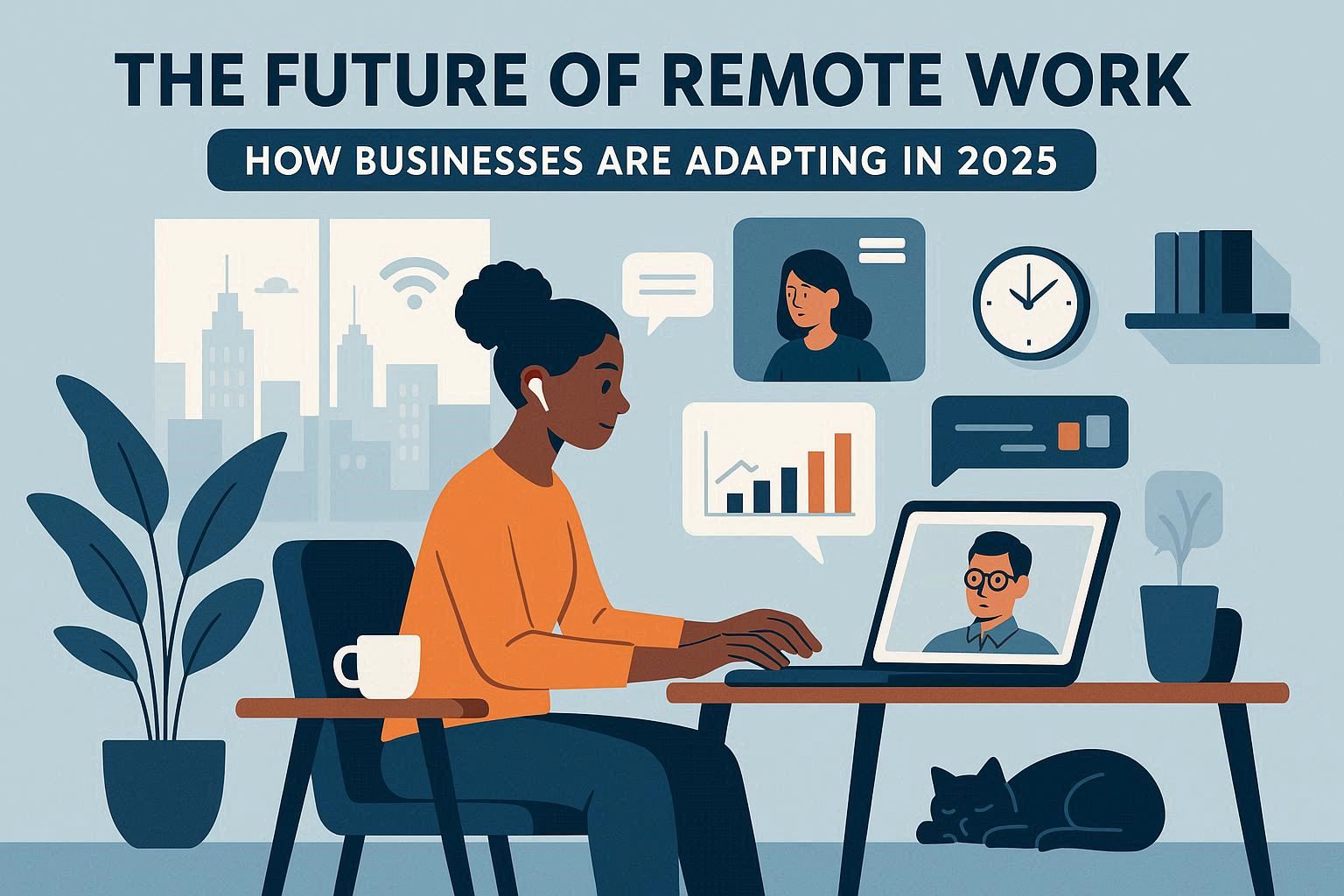The COVID-19 pandemic fundamentally reshaped the way people work, accelerating trends that were already underway. By 2025, remote and hybrid work models are no longer temporary solutions but permanent fixtures in the global business landscape. Companies are adapting to new technologies, employee expectations, and organizational structures that prioritize flexibility without sacrificing productivity.
This article explores how businesses are adapting to remote work in 2025, the benefits and challenges of hybrid models, the technologies making it possible, and what the future holds for organizations embracing this transformation.
1. The Evolution of Remote Work
Remote work is not new—freelancers, consultants, and distributed teams have been practicing it for decades. However, the global pandemic forced millions of businesses to adopt remote operations almost overnight. What began as an emergency response has since evolved into a sustainable business strategy. By 2025, many companies view remote work as a standard operating model rather than a temporary adjustment.
Hybrid work, where employees split their time between home and office, has become the dominant approach. This balance allows organizations to reduce costs, retain talent, and increase employee satisfaction, while still benefiting from in-person collaboration when needed.
2. Benefits of Remote and Hybrid Work
2.1 Increased Productivity – Contrary to early fears, remote work has often led to higher productivity. Without long commutes and with more control over their environments, many employees accomplish more in less time.
2.2 Access to Global Talent – Businesses are no longer limited by geography when hiring. By embracing remote work, companies can recruit the best talent worldwide, enhancing diversity and innovation.
2.3 Cost Savings – Organizations save on office space, utilities, and overhead costs. Some redirect these savings into employee benefits, technology upgrades, or sustainability initiatives.
2.4 Better Work-Life Balance – Employees value the flexibility to manage personal and professional responsibilities. Happier, healthier workers are more engaged and loyal to their employers.
2.5 Environmental Impact – Fewer commutes and smaller office footprints contribute to reduced carbon emissions, aligning with sustainability goals that are increasingly important to customers and investors alike.
3. Challenges of Remote Work
3.1 Communication Barriers – Without face-to-face interaction, miscommunication can increase. Companies must invest in digital collaboration tools and foster clear communication practices.
3.2 Maintaining Company Culture – Building trust, teamwork, and shared identity is harder when employees rarely meet in person. Leaders must intentionally nurture culture through virtual activities and consistent messaging.
3.3 Employee Burnout – The blurred line between home and work can lead to longer hours and stress. Businesses are addressing this with wellness programs, mental health support, and clear policies on work boundaries.
3.4 Cybersecurity Risks – Remote work increases exposure to security threats. Companies need robust cybersecurity protocols, secure networks, and ongoing employee training to protect sensitive data.
3.5 Management Challenges – Leading remote teams requires new skills. Managers must focus on outcomes rather than micromanagement, emphasizing trust, transparency, and results-driven leadership.
4. Technologies Driving Remote Work in 2025
4.1 Cloud Computing – Cloud platforms provide seamless access to files, applications, and collaboration tools from anywhere, forming the backbone of remote work infrastructure.
4.2 Video Conferencing and Virtual Collaboration Tools – Tools like Zoom, Microsoft Teams, and Google Meet remain essential for daily communication. Enhanced features such as real-time translation and AI-powered transcription improve accessibility.
4.3 Project Management Software – Platforms like Trello, Asana, and Monday.com help teams track progress, manage tasks, and ensure accountability in distributed environments.
4.4 Cybersecurity Solutions – Advanced encryption, VPNs, multi-factor authentication, and AI-driven monitoring are critical to secure remote networks.
4.5 Virtual and Augmented Reality – VR and AR are transforming remote collaboration by enabling immersive meetings, virtual offices, and even digital training simulations.
4.6 Artificial Intelligence – AI streamlines workflows through automation, predictive analytics, and virtual assistants, reducing manual tasks and supporting smarter decision-making.
5. The Role of Leadership in Remote Work
Leaders play a pivotal role in guiding organizations through the transition to remote and hybrid models. Successful leaders in 2025 focus on:
5.1 Trust and Empowerment – Instead of micromanaging, leaders empower employees by setting clear expectations and trusting them to deliver results.
5.2 Communication – Transparent, consistent communication builds trust and keeps remote teams aligned with company goals.
5.3 Employee Well-Being – Leaders recognize that productivity is linked to health and happiness. They invest in wellness initiatives, flexible schedules, and supportive workplace policies.
5.4 Continuous Learning – Encouraging employees to upskill ensures adaptability in a rapidly changing business environment.
5.5 Inclusivity – Remote work can unintentionally exclude certain employees. Inclusive leadership ensures equal opportunities for growth, recognition, and collaboration regardless of location.
6. The Future of Remote Work
Looking ahead, remote and hybrid work will continue evolving. Some key trends include:
6.1 The Rise of Digital-First Companies – Businesses designed from the ground up for remote operations will outpace traditional competitors by offering more flexibility and efficiency.
6.2 Global Workforce Integration – Cross-border teams will become the norm, with businesses seamlessly managing time zones, languages, and cultural differences.
6.3 AI-Driven Workflows – Artificial intelligence will increasingly handle repetitive tasks, allowing employees to focus on creativity, strategy, and human interaction.
6.4 Virtual Offices – The concept of virtual headquarters will gain traction, offering employees digital spaces that replicate the social and collaborative aspects of physical offices.
6.5 Policy and Regulation – Governments will implement policies to regulate remote work, addressing issues like taxation, data protection, and labor rights across borders.
Conclusion
By 2025, remote and hybrid work are no longer experiments—they are strategic advantages. Companies that embrace flexibility, invest in technology, and prioritize employee well-being will thrive in this new era of work. While challenges exist, the benefits of increased productivity, access to global talent, and cost savings make remote work an indispensable part of modern business.
The future of work is not tied to physical offices but to how effectively businesses harness technology, culture, and leadership to create environments where employees can succeed—wherever they are. For organizations willing to adapt, the future is full of opportunity.

